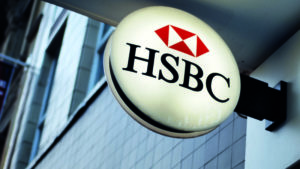By Nicolas Crémieux, head of convertible bonds at Mirabaud Asset Management
While we anticipate broader participation across sectors and market capitalisations in the stock market’s upward movement, it is evident that convertible bond returns have been underwhelming over the past three years. We attribute this relative lack of performance to a bias towards small-cap issuers in the convertible bond (CB) market.
When we were in a low interest rates environment, most issuers typically represented earlier-stage companies with smaller market capitalisations. The median market capitalisation of the underlying equities within the Refinitiv Global Convertible Bond index stands at $5.6bn versus a median of $116.2bn for constituents of the MSCI World index.
It is not surprising to observe that their historical returns have shown stronger correlation with the MSCI World Small Cap and MSCI World Mid Cap indices, opposed to the MSCI World Large Cap index.
Over the past 12 months in particular, convertible bonds’ underlying equities have trailed behind large-cap equities as investors prioritised quality and adopted a more risk-averse stance amidst concerns over rising interest rates, inflation and a potential recession.
As a result, their valuations have now returned to attractive levels, hence we see considerable potential for catch-up.
The MSCI World Small and Mid-Cap indices historically valued higher than the MSCI World Large Cap index, but now exhibit a discount in their valuations with a forward 12-month PE at 16.6 and 16.8, respectively, versus 19.
In addition, the MSCI World Large Cap index trades 2.8 points above its median since 2014, while the benchmarks for small and mid-cap equities trade 2.0 and 0.4 points lower, respectively.
See also: Woodford: Link avoided £50m FCA fine due to redress scheme
In our view, small and mid-cap stocks are poised to benefit from potential valuation catch-up and robust earnings growth. We believe now to be an opportune moment to revisit the underlying equities of convertible bond issuers as they have largely underperformed large-cap equities.
The parity of the Refintiv Global Convertible Bond index has dropped 16% since the end of 2020, while the MSCI World Large Cap index has gained 24% as of February.
We expect the shift in stance by central banks towards loosening credit conditions and reducing financing costs to favour small and mid-cap companies, which typically carry higher levels of debt compared to large caps.
Historically, data suggests that small and mid-cap stocks tend to outperform in the 6-12 months following the peak of interest rate cycles, as seen notably in the 1970s/80s when the Federal Reserve raised rates to combat inflation.
Moreover, valuation multiples are heavily influenced by investor flows, and with small and mid-caps funds experiencing consistent outflows for a few years, current positive sentiment could lead investors to be more optimistic about a broader range of stocks.
Additionally, the likelihood of increased takeover activity ─ often associated with small and mid-cap companies ─ could further boost their performance in 2024.
The last remaining condition needed for us to turn bullish on convertible bonds is on the verge of being fulfilled, as we anticipate a healthier and more sustainable market environment with reduced concentration in the upward movement.
We are convinced there is an attractive entry level, relative to the 60/40 portfolio, for adding an allocation to convertibles as they should offer enhanced diversification and return potential.







